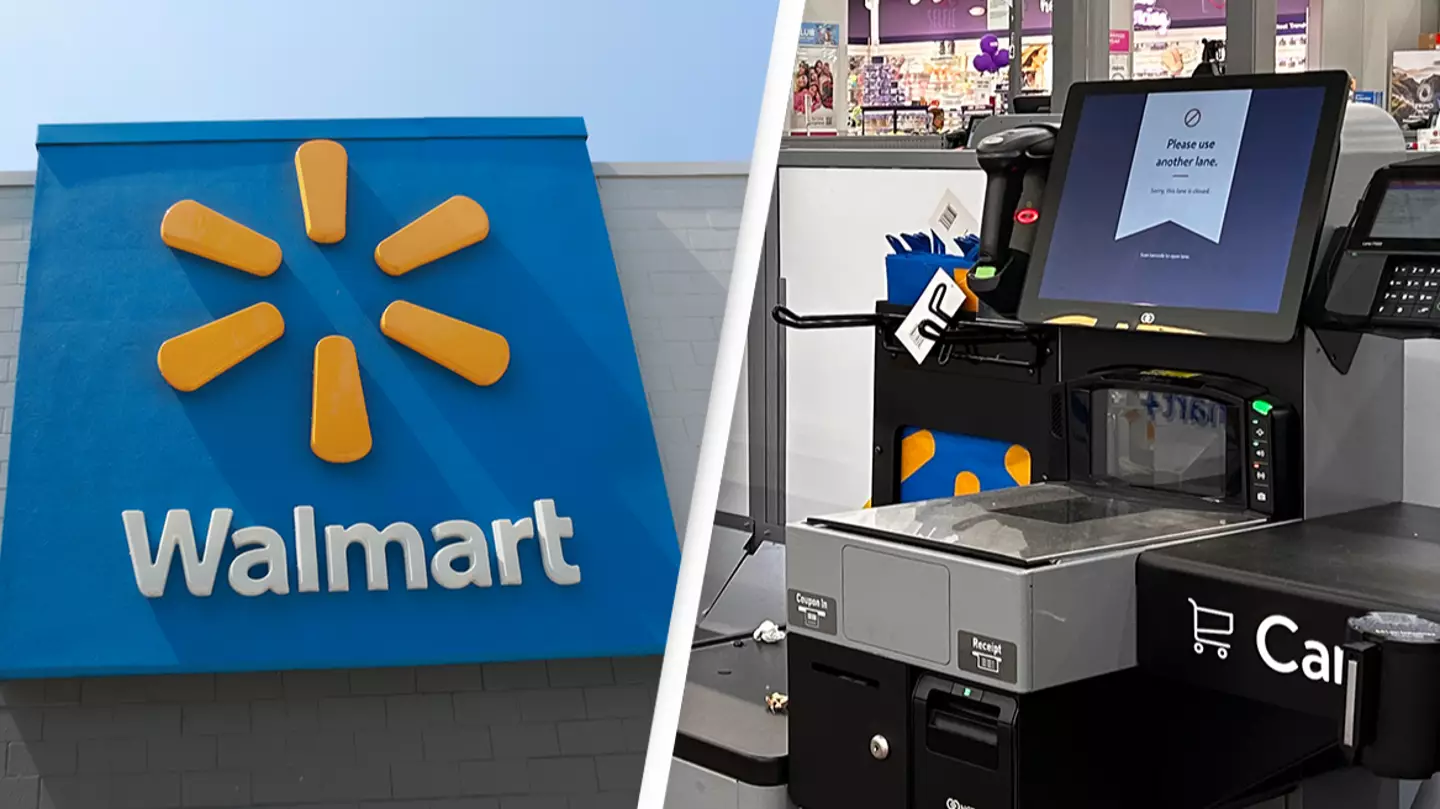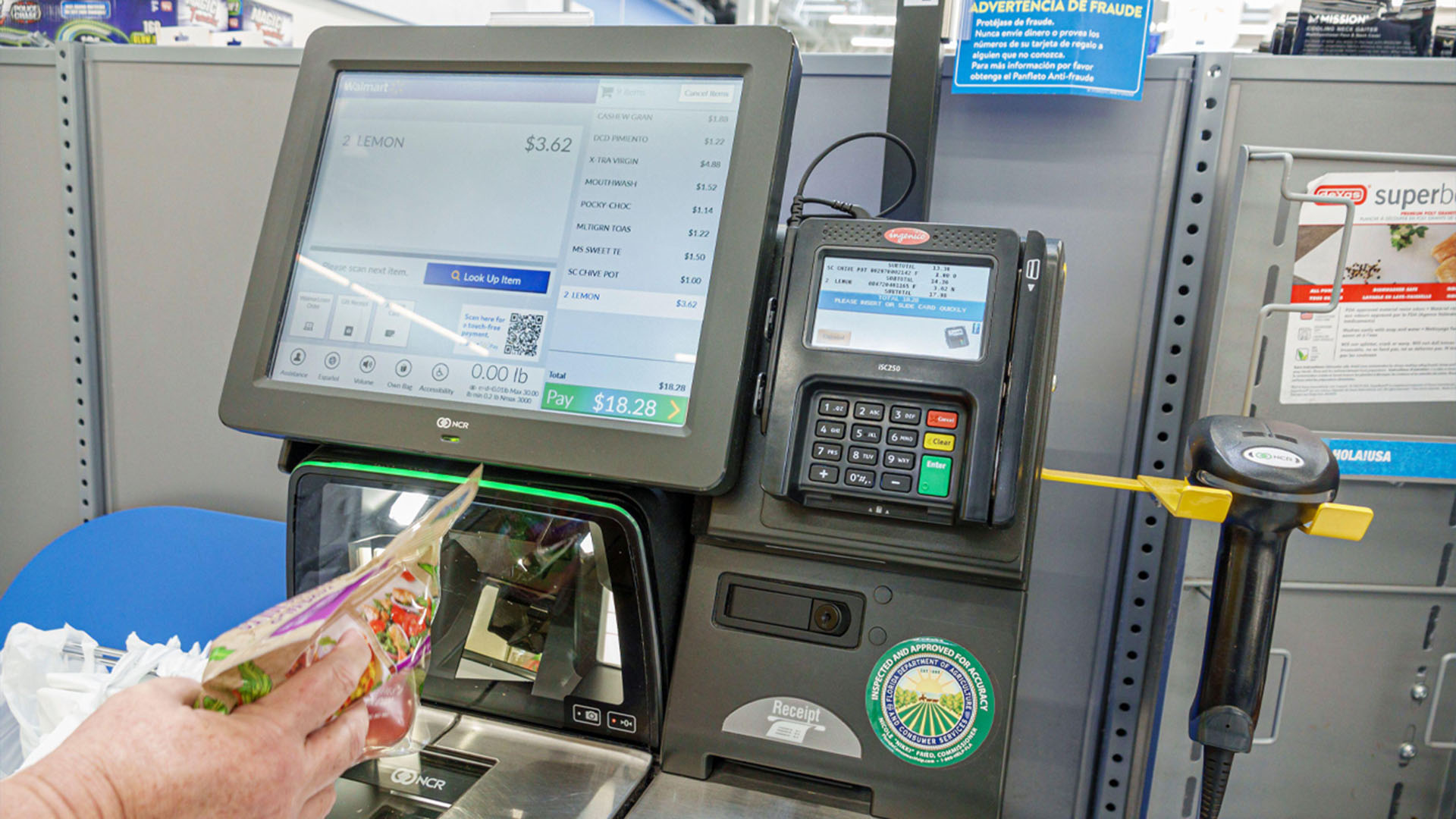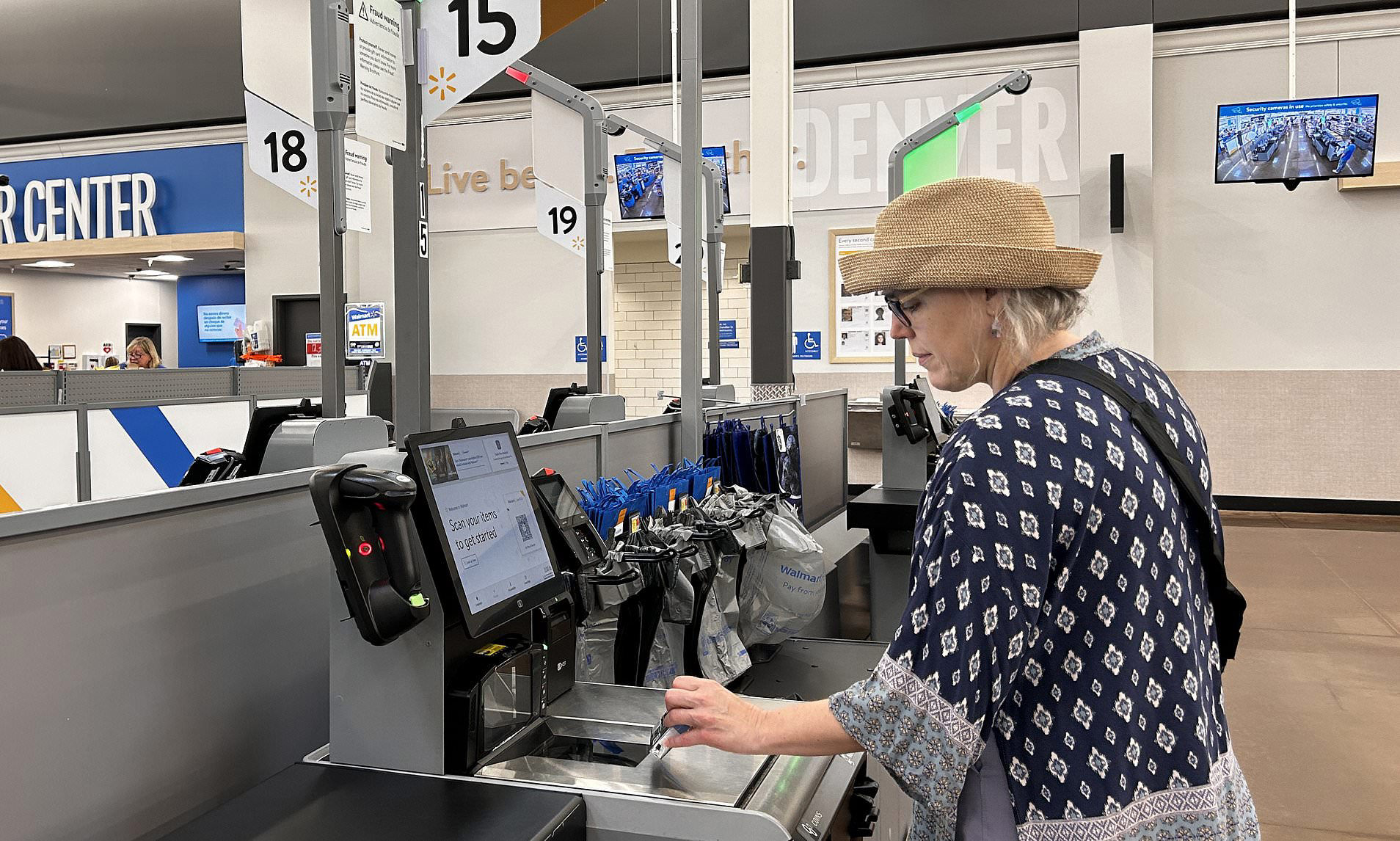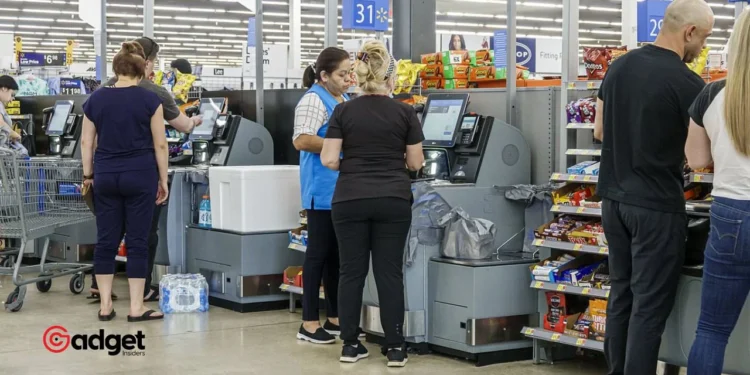In an era where self-service technology is becoming ubiquitous, Walmart has recently faced significant scrutiny due to an array of issues at their self-checkout stations. The retail giant, known for its widespread and often pioneering adoption of retail technology, was in a quandary last March when it inadvertently overcharged and undercharged customers at 1,600 stores nationwide.

The Technical Glitch Unveiled
The trouble started on March 19, when an internal system failure prevented the updating of price data at Walmart’s self-checkout kiosks. This glitch led to discrepancies in billing, impacting customers who opted for self-service checkout. The issues varied, with some shoppers being overcharged by an average of 1.88% on their total bill, while others found themselves undercharged for items ranging from food to apparel.
Documents viewed by Bloomberg News indicated that Walmart’s technical team struggled with the malfunction for days. Despite the swift action to rectify the error, the incident raised concerns about the reliability of self-checkout systems, a technology increasingly prevalent in modern retail settings.
Major Walmart self-checkout error led to customers being overcharged for days – refunds being offered https://t.co/odrDr5WFZZ #US #News #Politics # via @SatorOrgUaTwi
— Sator Tenet (@SatorOrgUaTwi) May 30, 2024
Walmart’s Response and Customer Reimbursement
Upon discovery of the error, the company acted to amend the situation. “The issue has been resolved, and 80% of customers who were overcharged have been reimbursed,” confirmed a company’s spokesperson to Bloomberg. This swift resolution underscores Walmart’s commitment to customer service and quick response to unexpected technological faults.

The timing of this hiccup was notably awkward for Walmart, coming off a strong financial quarter with a reported 6% increase in revenue from the previous year and a total of $108.7 billion in net sales in the U.S. alone. Therefore, this incident serves as a stark reminder of the challenges of digital transformations in retail spaces.
A Shift in Strategy Amid Rising Retail Theft
Interestingly, the self-checkout woes coincide with Walmart’s strategic shift away from these machines. In April, the retailer began phasing out self-checkout lanes in select locations across Ohio, Montana, and New Mexico, opting instead for traditional lanes. This move, aimed at enhancing the in-store shopping experience, also addresses concerns about retail theft, which has been rising across the industry.

Retail losses due to shoplifting reached a staggering $112.1 billion in 2022. In response, Walmart has restricted self-checkout usage to Walmart+ subscribers or Spark delivery drivers in certain areas. This selective access is part of a broader strategy to manage losses and improve security.
Consumer Trust and the Future of Self-Checkout
The self-checkout saga at Walmart is more than a technical glitch; it’s a significant event that raises questions about the balance between technological convenience and reliability. A recent LendingTree survey highlights the complexities of self-service systems, with 15% of consumers admitting to intentionally stealing an item at self-checkout. The survey also found that while 21% accidentally took an item, 69% opted not to return it.
As retailers like Walmart continue to navigate the fine line between innovation and customer satisfaction, incidents like these serve as crucial learning opportunities. The future of self-checkout will likely depend not just on technological advancements but also on how these systems can be designed to foster trust and ensure a positive shopping experience for all customers.










